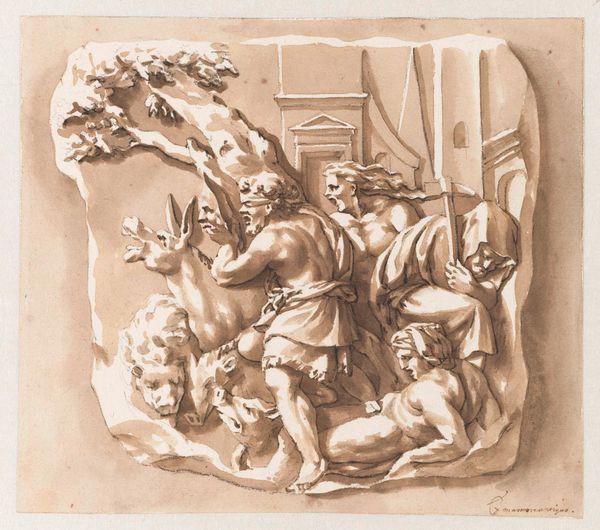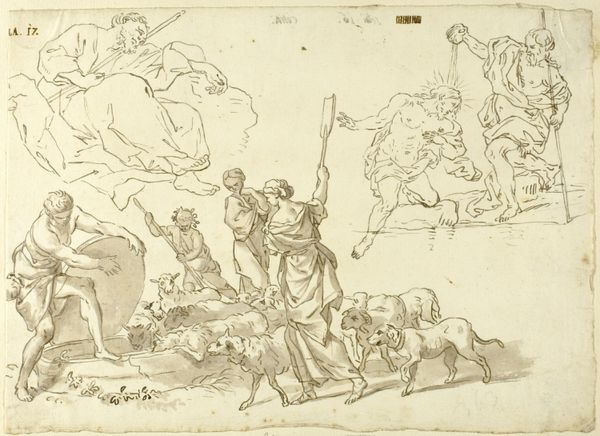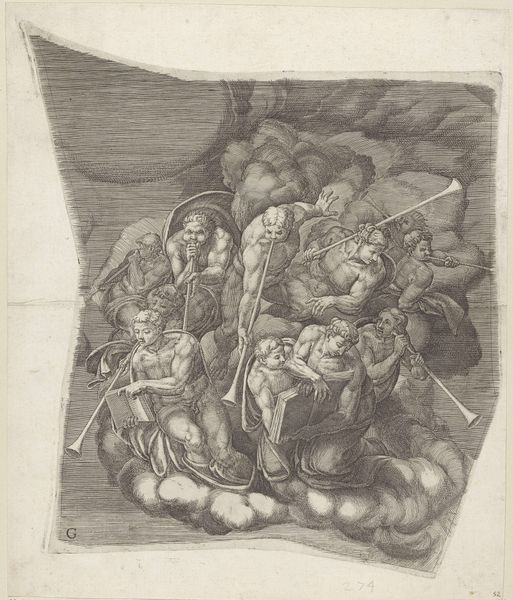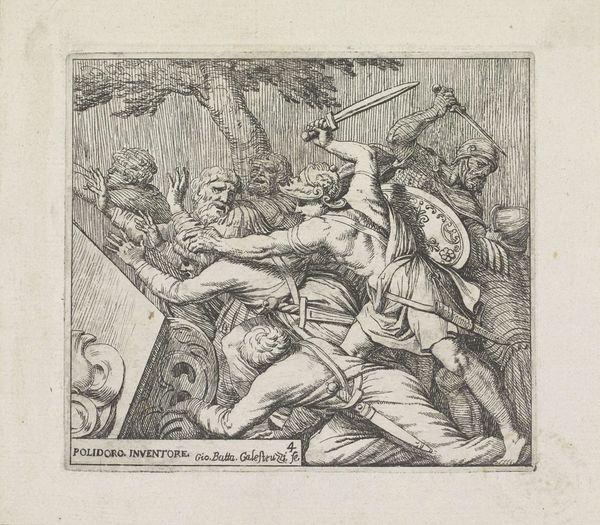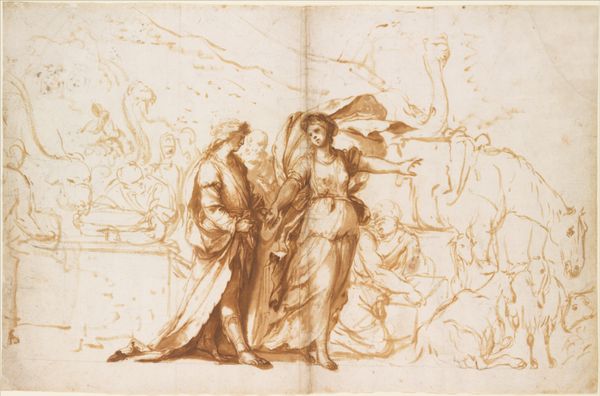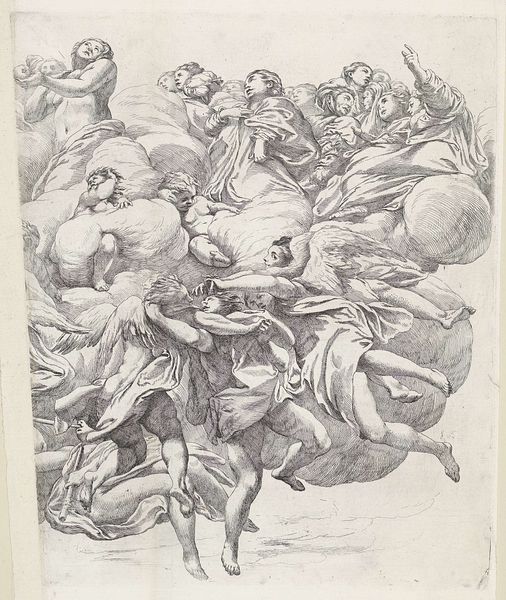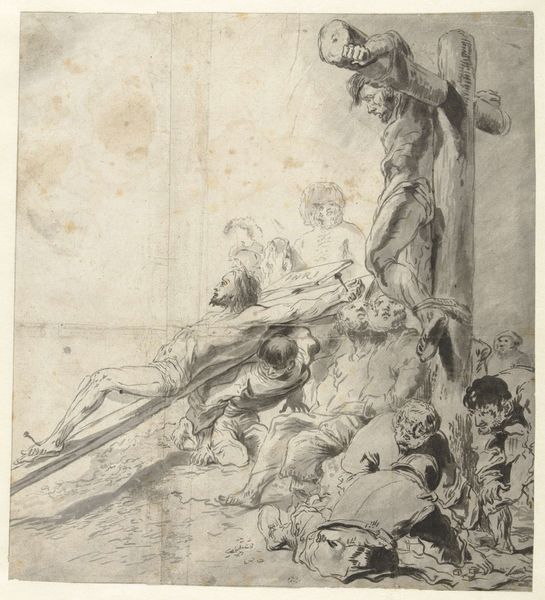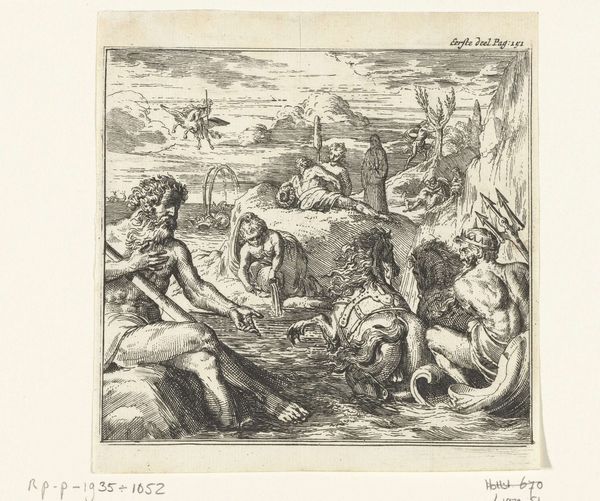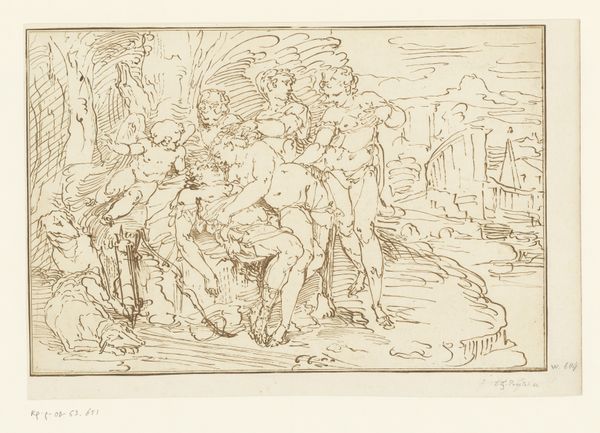
drawing, ink, pen
#
drawing
#
narrative-art
#
baroque
#
caricature
#
figuration
#
ink
#
pen
#
history-painting
Dimensions: height 178 mm, width 188 mm
Copyright: Rijks Museum: Open Domain
Editor: Here we have a drawing titled "Fragment van een reliëf," possibly created between 1665 and 1668 by Constantijn Huygens II, made using pen and ink. It's a lively scene, perhaps depicting a historical event, but there’s a curious unfinished quality to it. What do you see in this fragment? Curator: Immediately, I'm drawn to the process. The lines, the hasty sketches – they reveal the labor involved in image making. Huygens used readily available materials, pen and ink on paper, challenging any preciousness surrounding art. Consider how this contrasts with the potential subject matter - possibly a grand historical scene - reduced to a sketch, focusing instead on the act of production. The materiality here is the message. Editor: So, you are saying it’s less about what's depicted, and more about how it was made and what that says about its value? Curator: Precisely! Look at the blurring of the lines, literally and figuratively, between 'high' art and the craft of drawing. He uses the medium of pen and ink to create a caricature and a historical scene. This challenges Baroque conventions. Can you spot areas where labor and societal dynamics might intersect? Editor: Perhaps the way the figures are positioned suggests a social hierarchy. Those on the donkey, seemingly more important, are elevated, while those at the bottom seem to be labourers. Curator: Exactly. The drawing, while fragmented, lays bare the power structures and modes of production inherent in Baroque art itself, and indeed, society as a whole. We’re not just seeing an image; we are seeing the material embodiment of its creation and context. Editor: I see! The roughness of the sketch, the obviousness of the materials used, throws the focus back onto the production, not just the aesthetic qualities, forcing you to consider labor and social dynamics! Curator: And the consumption! Consider the intended audience of such a sketch. Not the masses, certainly, but an elite with access to paper, ink, and the leisure to appreciate the skill. Editor: That’s really fascinating, it has definitely altered how I'm reading the piece.
Comments
No comments
Be the first to comment and join the conversation on the ultimate creative platform.
